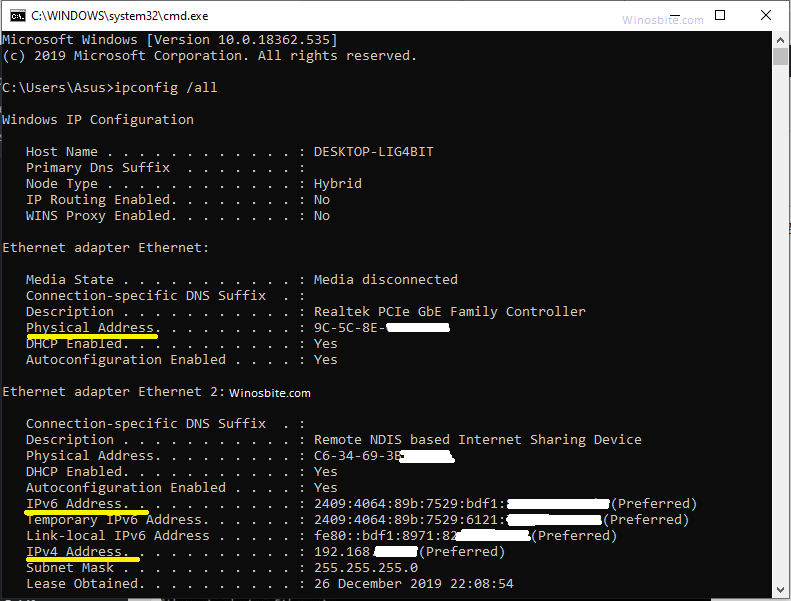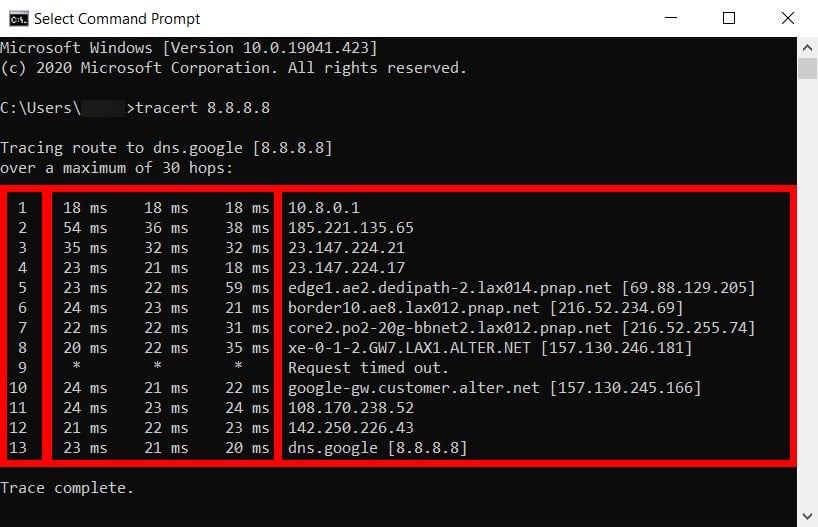

It can give good information both about where the communication is failing and what path is being taken to the resource. When finished you can close the command-line window by typing `exit` and hitting Enter.Ī trace route can be useful in troubleshooting in a number of situations, for example, when you are having trouble reaching a resource. Not all "hops" will necessarily respond, and it is not unusual for some "hops" to respond with a "Request timed out." If several "hops" in a row time out, then the trace route is almost certainly not going to complete and you can cancel it with a ctrl-C. The results of the trace route will continue until the destination is reached or until the maximum number of "hops" is reached. Paste the selected text elsewhere, such as in an email or document.

#Iptrace command windows windows
You can leave out the "-d" and have the names resolve if you wish.Ī note about copying data from the command prompt window it is a bit different than most other Windows interfaces. The "-d" is simply to prevent the resolution of IP addresses into names. For example, to trace route to you would enter `tracert -d and press enter. Here, we have the hop number (1), the domain name/IP address (in this case a home router), then RTT1, RTT2, and RTT3 (Round Trip Time - the time it takes for a packet to get to the hop and back to the. Type in `tracert ` or, for a somewhat faster response `tracert -d `įor enter the IP address or name of the site you wish to reach. 1 homerouter.cpe (192.168.8.1) 10.129 ms 1.528 ms 1.373 ms. The easiest way to do that is to go to Start->Run and type in "cmd" then click "OK."įrom the command prompt (which will look like this) To perform a trace route on a Windows computer (this is universal on all recent Windows versions) open a command prompt. Here are a few to get started with: nc -help This command will print a list of all of the available commands you can use in Netcat. Windows has a command-line tool for performing a trace route. Once you have a Netcat application set up on your Windows or Linux server, you can start running basic commands to test its functionality.


 0 kommentar(er)
0 kommentar(er)
